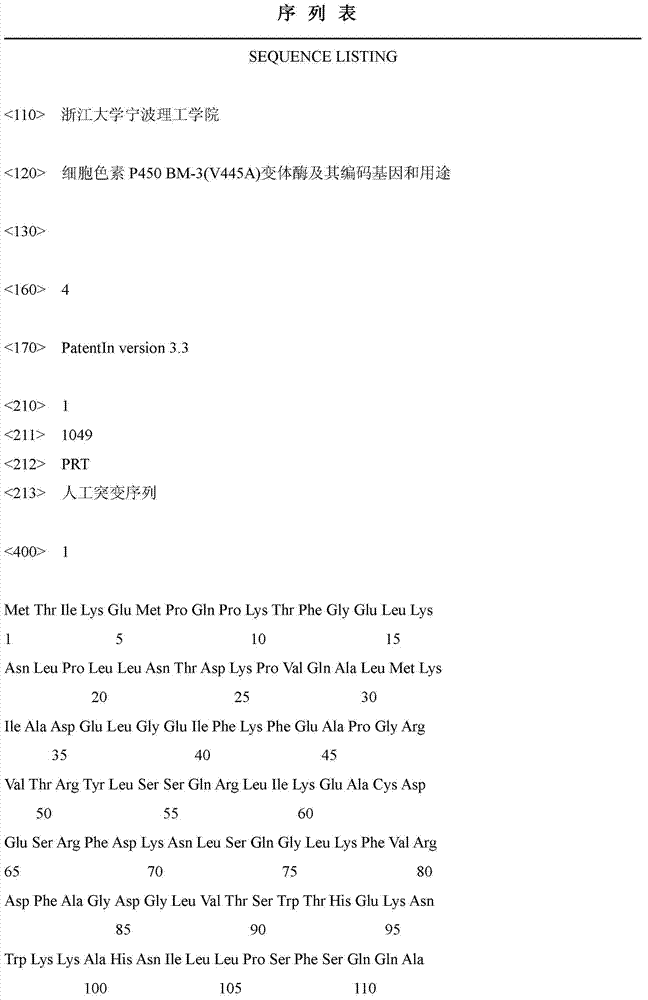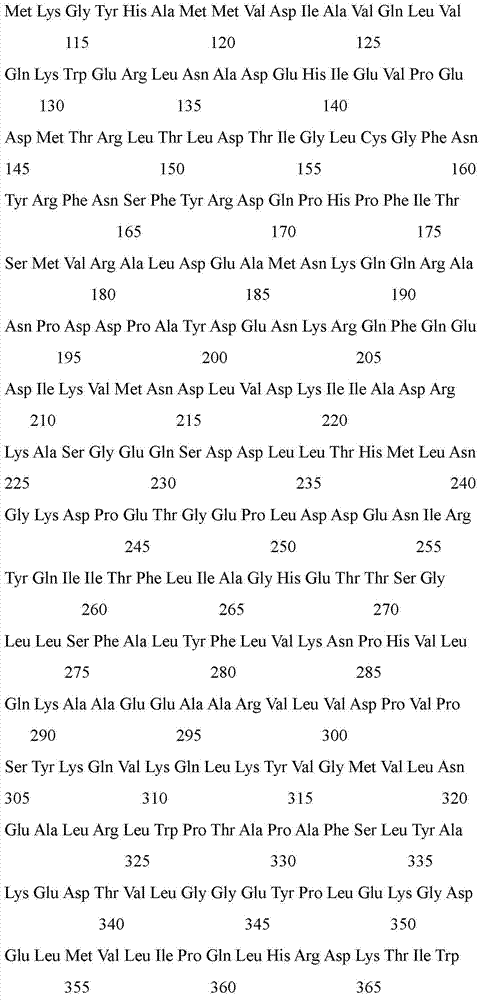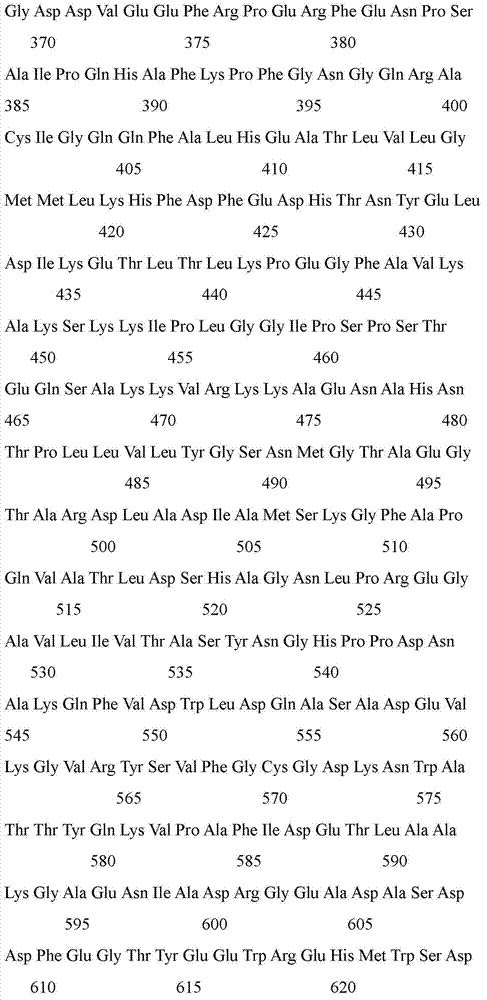Cytochrome P450BM-3 (V445A) variant enzyme as well as coding genes and application thereof
A cytochrome and variant technology, applied in the field of variant enzymes, can solve problems such as poor thermal stability, low efficiency, and low affinity
- Summary
- Abstract
- Description
- Claims
- Application Information
AI Technical Summary
Problems solved by technology
Method used
Image
Examples
Embodiment Construction
[0020] 1. Plasmid pET-28a(+)-P450BM-3 (F87V / A74G / L188Q)
[0021] The plasmid pET-28a(+)-P450BM-3 (F87V / A74G / L188Q) used in the present invention was donated by Prof. R.D. Schmid of the University of Stuttgart, Germany. It is a cytochrome P450BM-3 (F87V / A74G / L188Q) variant enzyme The gene was inserted downstream of the promoter of the original vector pET-28a(+), and the sequence of the mutant gene and the structure of the recombinant plasmid were recorded in Chinese Patent 00810943.5, Chinese Patent 200610052588.0 and literature (“Directed Evolution of the Fatty-Acid Hydroxylase P450 BM”). -3 into an Indole-Hydroxylating Catalyst. Chemistry-A European Journal. 2000, 6(9): 1531-1536"). The construction method of the recombinant plasmid can refer to the existing general plasmid construction method. The purpose of using this plasmid is to obtain the cytochrome P450BM-3 (F87V / A74G / L188Q) variant enzyme gene, and there is no specific requirement for the vector.
[0022] 2. Design ...
PUM
| Property | Measurement | Unit |
|---|---|---|
| catalytic efficiency | aaaaa | aaaaa |
Abstract
Description
Claims
Application Information
 Login to View More
Login to View More - R&D
- Intellectual Property
- Life Sciences
- Materials
- Tech Scout
- Unparalleled Data Quality
- Higher Quality Content
- 60% Fewer Hallucinations
Browse by: Latest US Patents, China's latest patents, Technical Efficacy Thesaurus, Application Domain, Technology Topic, Popular Technical Reports.
© 2025 PatSnap. All rights reserved.Legal|Privacy policy|Modern Slavery Act Transparency Statement|Sitemap|About US| Contact US: help@patsnap.com



